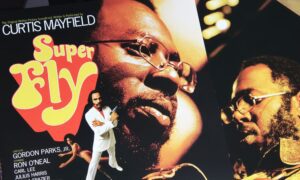
Exploring the Bee Gees’ Musical Voyage: A Comprehensive Album Guide
The Bee Gees, consisting of the Gibb brothers Barry, Robin, and Maurice, left an indelible mark on the 1970s music scene and beyond. Renowned for their distinctive falsetto and unforgettable tunes, their legacy extends well past the confines of disco, encompassing a wide spectrum of musical styles. This guide offers an in-depth look at their transformative albums and standout tracks, ensuring fans and newcomers alike can appreciate the breadth of their musical journey.
The Bee Gees’ Formative Years: “Bee Gees’ 1st” (1967)
The saga begins with Bee Gees’ 1st, a blend of pop and rock that introduced the world to “To Love Somebody” and “New York Mining Disaster 1941.” This debut set the stage for their eclectic sound.
Psychedelic Experiments: “Horizontal” (1968) & “Idea” (1968)
Horizontal and Idea marked the band’s foray into psychedelic music, featuring hits like “Massachusetts.” These albums showcased the Bee Gees’ willingness to explore and expand their musical palette and ability to create classic songs.
Orchestral Ambitions: “Odessa” (1969)
With “Odessa,” the Bee Gees embraced experimental orchestral arrangements, demonstrating their artistic range and ambition.
Disco Reigns Supreme
The Soundtrack of a Generation: “Saturday Night Fever” (1977)
This soundtrack became synonymous with disco, thanks to megahits like “Stayin’ Alive” and “Night Fever,” and solidified the Bee Gees’ place in music history.
Disco with a Dash of R&B: “Children of the World” (1976) & “Spirits Having Flown” (1979)
Children of the World and Spirits Having Flown fused disco with R&B elements, further cementing the Bee Gees’ legendary status.
Explore Bee Gees further in Harmony Heroes | The Bee Gees Best Songs
Post-Disco Evolution
Rock Infusion: “Living Eyes” (1981)
“Living Eyes” saw the Bee Gees incorporating rock elements into their music, signifying a stylistic shift.
Electronic Exploration: “E.S.P.” (1987)
With E.S.P., the group ventured into electronic sounds, showcasing their adaptability and versatility.
The Comeback: “One” (1989)
“One” represented a significant comeback, with its title track achieving chart-topping success.
The Bee Gees in the ’90s and Beyond
Diverse Musical Experiments: “High Civilization” (1991) & “Size Isn’t Everything” (1993)
These albums saw the Bee Gees experimenting with rock and pop, reflecting their ever-evolving sound.
Return to Signature Sound: “Still Waters” (1997)
“Still Waters” marked a return to their iconic sound, resonating with fans old and new.
A Final Ode: “This Is Where I Came In” (2001)
“This Is Where I Came In” was a fitting culmination of the Bee Gees’ diverse musical journey, embracing various styles and influences.
Catalog Highlights: Live Performances and Greatest Hits
Capturing the Magic: “One Night Only” (1998)
One Night Only captures the Bee Gees live in concert, offering a collection of their greatest hits performed with unmatched energy and passion.
Evolution of Sound: “Main Course” (1975)
Main Course marked a pivotal shift in the Bee Gees’ sound, introducing elements that would become staples in their disco repertoire.
A Legacy of Hits: Compilation Albums
With the greatest hits collections like Best of Bee Gees (1969), Greatest (1979), and Number Ones (2004), fans can explore the Bee Gees’ most iconic tracks and the evolution of their sound over the decades.
FAQs: Unraveling the Bee Gees’ Musical Impact
Why is the “Saturday Night Fever” soundtrack iconic? It epitomizes the disco era and showcases the Bee Gees’ extraordinary contributions to the genre.
What distinguishes the Bee Gees’ sound? Their unique use of falsetto vocals and their ability to craft harmonious and memorable melodies.
Did the Bee Gees continue to evolve musically after the disco era? Yes, they explored a variety of musical styles well into the 2000s, demonstrating their versatility as artists.
How extensive is the Bee Gees’ discography? Their discography encompasses 22 studio albums, numerous compilations, and live albums, offering a rich tapestry of musical innovation.
Why has the Bee Gees’ music remained influential? Their catchy melodies, harmonic sophistication, and dynamic energy continue to inspire artists across multiple genres, attesting to their lasting impact on the music world.
Delving into the Bee Gees’ discography offers a comprehensive overview of their musical evolution and the enduring legacy they have left behind. Their albums highlight their versatility as musicians and underscore their significant influence on the landscape of popular music.










